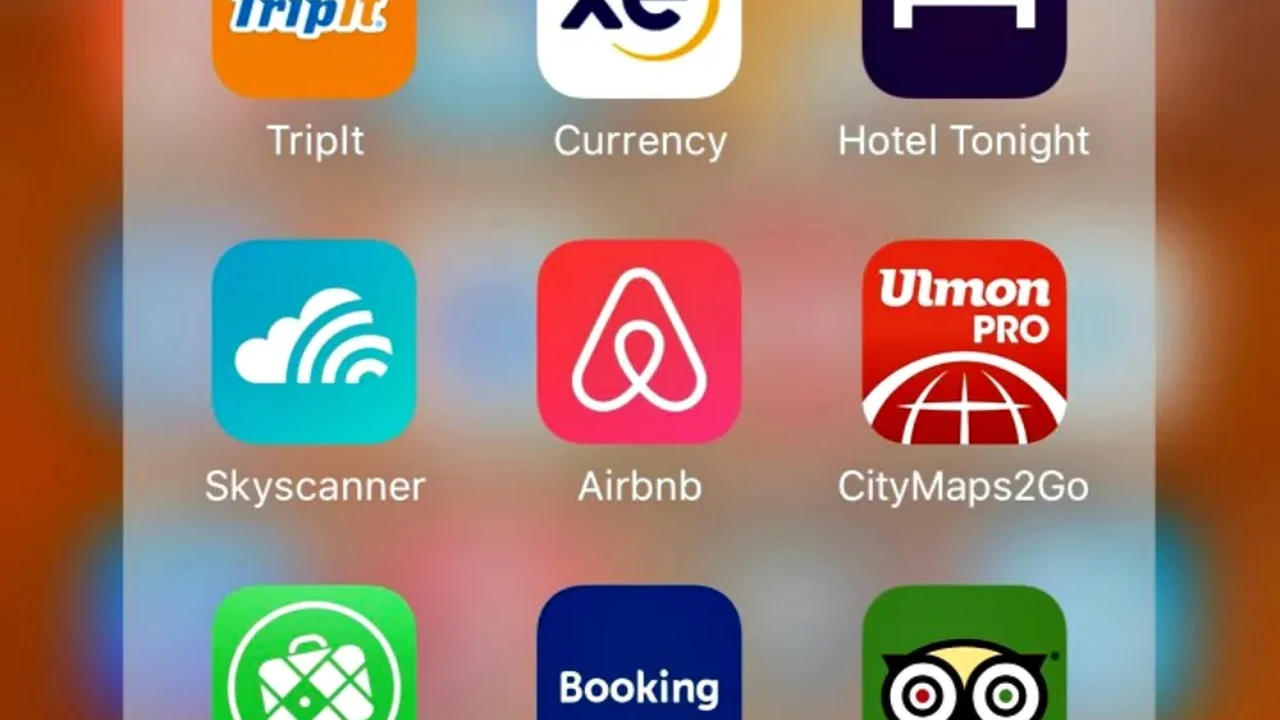Emergency Funds Travel
Unlock your potential with an emergency fund for unexpected travel expenses. This article emphasizes the importance of having a financial safety net while traveling and provides tips for building and maintaining an emergency fund. Be prepared for any situation.

Why You Absolutely Need an Emergency Fund for Travel
Let's face it, travel is awesome. Exploring new cultures, trying exotic foods, and seeing breathtaking landscapes – what's not to love? But things don't always go according to plan, right? Flights get delayed, bags get lost, and sometimes…well, sometimes emergencies happen. That’s where an emergency fund swoops in to save the day (and your trip!). Think of it as your travel insurance policy, but instead of covering medical bills, it covers unexpected financial hiccups.
Having an emergency fund means you can handle these curveballs without throwing your entire budget out the window. It's the difference between stress-free adventures and panic-inducing financial strain. Trust me, the peace of mind alone is worth it.
How Much Should You Save for Your Travel Emergency Fund?
Okay, so you're convinced. An emergency fund is a must. But how much is enough? There's no one-size-fits-all answer, but here's a breakdown to help you figure out your magic number:
Consider Your Travel Style and Destination
Are you backpacking on a shoestring budget or indulging in luxury resorts? Your travel style significantly impacts how much you should save. A budget traveler might get away with a smaller fund, while a luxury traveler will want a bigger cushion.
Your destination also matters. Southeast Asia is generally more affordable than, say, Europe. Research the potential costs of emergencies in your destination. Are medical services expensive? Is theft common? Factor these into your calculations.
Calculate Potential Emergency Expenses
Let's brainstorm some common travel emergencies and their potential costs:
- Lost or Stolen Wallet/Phone: Consider the cost of replacing your ID, credit cards, and phone. Factor in potential SIM card costs and any cancellation fees.
- Medical Emergency: Even with travel insurance, you might need to pay upfront for medical care or prescriptions. Research the average cost of a doctor's visit or hospital stay in your destination.
- Flight Cancellation or Delay: Unexpected delays can lead to extra accommodation, food, and transportation costs.
- Natural Disaster: While rare, natural disasters can disrupt travel plans and require emergency evacuation or accommodation.
- Legal Issues: Hopefully, you'll never need it, but having funds available for legal assistance can be a lifesaver.
Once you have a list of potential emergencies and their estimated costs, add them up. This will give you a rough idea of how much you need in your emergency fund.
A General Rule of Thumb
As a general guideline, aim to save at least 1-3 months' worth of your regular living expenses. This should cover most common travel emergencies. If you're traveling for an extended period or to a high-risk destination, consider saving more.
Where to Keep Your Travel Emergency Fund
Now that you know how much to save, let's talk about where to keep it. You want it to be accessible but also secure.
High-Yield Savings Account
A high-yield savings account is a great option for storing your emergency fund. It's easily accessible, FDIC-insured (in the US), and earns you interest while you save. Look for accounts with no monthly fees and competitive interest rates.
Travel-Friendly Bank Account
Consider opening a bank account that's specifically designed for travelers. These accounts often have no foreign transaction fees, free ATM withdrawals worldwide, and online banking access. This makes it easy to access your emergency fund from anywhere in the world.
Prepaid Travel Card
A prepaid travel card can be a convenient way to carry your emergency fund. Load it with the amount you need and use it like a debit card. Look for cards with low fees and widespread acceptance.
Cash (with Caution)
While it's tempting to carry cash, it's not the safest option. Keep a small amount of local currency on hand for immediate needs, but avoid carrying large sums of cash. Store it securely in a hidden money belt or travel wallet.
Tips for Building Your Travel Emergency Fund
Building an emergency fund takes time and discipline. Here are some tips to help you reach your savings goal:
Set a Savings Goal and Timeline
Determine how much you need to save and set a realistic timeline. Break down your goal into smaller, manageable chunks. For example, if you need to save $3000 in six months, aim to save $500 per month.
Automate Your Savings
Set up automatic transfers from your checking account to your savings account each month. This makes saving effortless and ensures you stay on track.
Cut Expenses
Identify areas where you can cut back on spending. Pack lunch instead of eating out, cancel unused subscriptions, and look for free activities. Every dollar saved gets you closer to your goal.
Side Hustle
Consider taking on a side hustle to boost your income. Freelance writing, online tutoring, or delivery driving are all great options for earning extra money.
Use Windfalls Wisely
When you receive a bonus, tax refund, or gift money, allocate a portion of it to your emergency fund. This can significantly accelerate your savings progress.
Emergency Fund Product Recommendations
Wise (formerly TransferWise)
Description: Wise offers a multi-currency account that allows you to hold and manage money in multiple currencies. It's perfect for digital nomads who need to send and receive money internationally with low fees and excellent exchange rates.
Usage Scenario: Imagine you're in Thailand and need to transfer money from your US account to pay for accommodation. Wise allows you to do this quickly and easily with minimal fees.
Comparison: Compared to traditional banks, Wise offers significantly lower fees and better exchange rates. It's also more convenient than using cash or traveler's checks.
Price: Opening an account is free. Transaction fees vary depending on the currency and amount transferred, but they are generally very competitive.
Revolut
Description: Revolut is a fintech company that offers a range of financial services, including a multi-currency account, virtual debit cards, and budgeting tools. It's a great option for managing your finances while traveling.
Usage Scenario: You're in Vietnam and want to withdraw cash from an ATM. Revolut allows you to withdraw a certain amount of cash each month without fees. You can also use the virtual debit card for online purchases.
Comparison: Revolut offers similar services to Wise but also includes budgeting tools and cryptocurrency trading. It's a good option if you want a more comprehensive financial management platform.
Price: Revolut offers several different plans, including a free plan with limited features and paid plans with more benefits. The paid plans offer higher withdrawal limits and other perks.
Charles Schwab High Yield Investor Checking Account
Description: This checking account offers several benefits for travelers, including no foreign transaction fees, unlimited ATM fee rebates worldwide, and a competitive interest rate.
Usage Scenario: You're traveling through Europe and need to withdraw cash frequently. With Charles Schwab, you can withdraw cash from any ATM without paying fees. Schwab reimburses you for any fees charged by the ATM operator.
Comparison: Unlike many checking accounts, Charles Schwab doesn't charge foreign transaction fees or ATM fees. This can save you a significant amount of money while traveling.
Price: There are no monthly fees or minimum balance requirements for this account.
Using Your Emergency Fund Responsibly
Remember, your emergency fund is for emergencies only. It's not for impulse purchases or splurges. Here are some guidelines for using your fund responsibly:
- Assess the Situation: Before dipping into your emergency fund, carefully assess the situation. Is it truly an emergency? Can you resolve the issue without spending money?
- Document Expenses: Keep track of all expenses paid from your emergency fund. This will help you understand where your money went and how much you need to replenish.
- Replenish the Fund: As soon as possible, start replenishing your emergency fund. Set a goal and timeline for rebuilding your savings.
Having a travel emergency fund is like having a safety net. It allows you to explore the world with confidence, knowing that you're prepared for unexpected challenges. So, start saving today and enjoy your adventures with peace of mind!
:max_bytes(150000):strip_icc()/277019-baked-pork-chops-with-cream-of-mushroom-soup-DDMFS-beauty-4x3-BG-7505-5762b731cf30447d9cbbbbbf387beafa.jpg)






